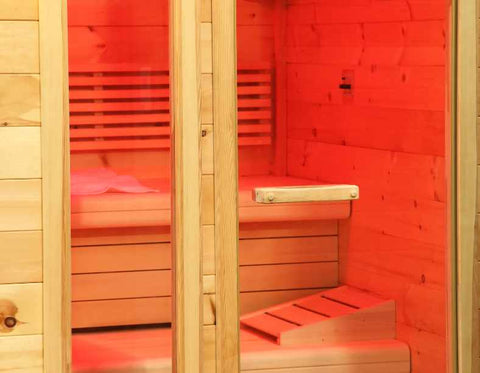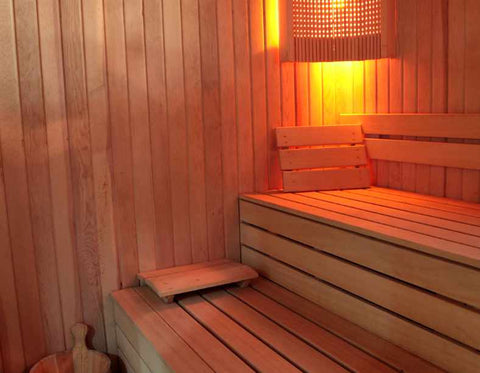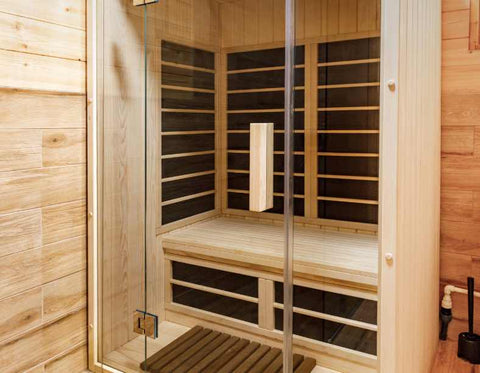Sauna Before or After Workout: Maximizing the Benefits of Your Fitness Routine
When it comes to optimizing your fitness routine, you might have heard about the potential health benefits of incorporating sauna sessions into your workout regimen. But the question remains: is it better to use the sauna before or after a workout?
In this comprehensive guide, you'll learn the pros and cons of both approaches, exploring how the timing of your sauna sessions can impact your performance, recovery, and overall well-being.
We'll start by providing an overview of sauna therapy and its physiological effects on the body, as well as the numerous benefits of regular exercise. Then, we'll take a closer look at how to effectively use the sauna before and after your workouts, including recommended durations, temperatures, and essential safety tips.
Whether you're a seasoned athlete looking to enhance recovery or a fitness enthusiast seeking to maximize the benefits of your workout routine, this article will provide valuable insights and practical advice to help you harness the power of sauna therapy in conjunction with exercise.

An Overview of Sauna Therapy and Exercise
Sauna therapy involves sitting in a room heated to high temperatures, ranging from 70°C to 100°C (158°F to 212°F), for a set period. This practice, originating from Finland, has been a cornerstone of wellness culture for centuries.
Modern saunas can be classified into two main types: traditional saunas, which use wood, electric, or gas heaters to warm the air and infrared saunas. An infrared sauna uses infrared light to create heat directly in the body without significantly increasing air temperature.
Physiological Effects of Sauna Use
The intense heat from a home sauna session induces a range of physiological responses that mimic mild exercise: an increased heart rate and dilation of blood vessels lead to enhanced blood flow throughout the body.
The process, known as vasodilation, helps in transporting oxygen and nutrients more efficiently, aiding in muscle recovery and reducing inflammation. Moreover, sauna use stimulates sweating, which helps eliminate toxins through the skin and can aid in electrolyte balance.
Research has shown that regular sauna use can have cardiovascular benefits similar to moderate exercise, such as lowered blood pressure and improved arterial compliance. Sauna bathing may help lower your chances of heart disease and high blood pressure.
Additionally, the heat stress from a sauna session triggers the production of heat shock proteins, which play a crucial role in cellular repair and protection, further aiding in muscle recovery and resilience.
Benefits of Exercise
Regular physical activity is well-documented for its extensive health benefits, including improved cardiovascular health, muscle strength, flexibility, and mental well-being. Exercise stimulates the release of endorphins, known as "feel-good" hormones, which reduce the perception of pain and foster a positive mood.
From a physiological standpoint, exercise enhances metabolic rate, promotes fat loss, and improves insulin sensitivity, contributing to overall health and longevity.
RELATED TO: Enhance Your Fitness Journey: The Potential Benefits of Sauna After Workout
How to Use Sauna Before Workout Session

Pre-Workout Warm-Up
Using the sauna as a pre-workout warm-up can effectively prepare your body for physical exertion. A brief sauna bathing of 5 to 10 minutes can elevate muscle temperature and flexibility, reducing the risk of strains and injuries during more intense physical activities.
The heat from your pre-workout sauna sessions helps to relax the muscles and increase blood flow, making the subsequent stretching or light aerobic warm-up exercises more effective.
Mental Preparation
The calming effect of sauna heat can also be beneficial for mental preparation before engaging in exercise.
The sauna's quiet and warm environment offers a space for mindfulness and mental relaxation, allowing you to focus on your workout goals and clear your mind of external stressors. This mental "reset" can enhance your concentration and motivation for the upcoming physical activity.
Recommended Duration and Temperature

For pre-workout sauna use, it's imperative to balance the session duration and sauna temperature to avoid excessive sweating or dehydration before exercising.
A moderate sauna temperature range (70°C to 80°C / 158°F to 176°F) for 5 to 15 minutes is generally recommended. This timeframe allows you to reap the sauna benefits of muscle warming and mental preparation without overly taxing the body.
Hydration and Safety Tips
Hydration is key when incorporating sauna sessions into your pre-workout routine. Drink at least one glass of water before entering the sauna and consider bringing a water bottle to sip during your session.
Pay attention to your body's signals; if you feel dizzy, nauseous, or overly fatigued, exit the sauna and cool down. It's also advisable to wait a few minutes after leaving the sauna before starting intense physical activities, allowing your core body temperature and heart rate to return to normal levels.
How to Use Sauna After Workout

Enhancing Recovery
Post-workout sauna sessions can significantly contribute to the body's recovery process.
The heat stimulates increased blood circulation, which helps in the efficient removal of metabolic waste products accumulated during exercise. This enhanced blood flow also delivers essential nutrients and oxygen to tired muscles, speeding up the recovery process and reducing stiff muscles or relieve sore muscles.
The heat stress from the post workout sauna session activates the body's repair mechanisms, including the production of heat shock proteins, which assist in cellular repair and protect against muscle damage.
Relaxation Benefits
The sauna after a workout provides a tranquil environment for mental and physical relaxation after intense physical activity. The heat has a soothing effect on the body, helping to release tension in the muscles and joints.
This relaxation effect is complemented by the release of endorphins, the body's natural pain-relieving and happiness-boosting chemicals, which can lead to a state often referred to as "post-sauna bliss."
Recommended Duration and Temperature

For post-workout recovery, a sauna session of 15 to 20 minutes at temperatures between 80°C and 90°C (176°F to 194°F) is generally recommended. This time and sauna temperature range allows the body to experience the therapeutic effects of the heat without causing undue stress.
It's important to listen to your body during the session; if you start feeling overly fatigued or uncomfortable, it's time to exit the sauna.
Hydration and Nutrition
Rehydrating after a workout and sauna session is crucial, as both activities lead to significant fluid loss through sweat. Drink plenty of water or electrolyte-rich drinks to replenish lost fluids and aid in the recovery process.
It's also beneficial to consume a post-workout meal or snack containing protein and carbohydrates within 45 minutes after your exercise and sauna session to help repair and rebuild muscle tissues and replenish glycogen stores.
Comparing Pre and Post-Workout Sauna Use

Pre-Workout Sauna
Pros:
-
Warms up the muscles, potentially reducing the risk of injury.
-
Enhances flexibility and range of motion.
-
Mentally prepares you for the workout ahead, reducing stress and increasing focus.
Cons:
-
Risks dehydration and overheating if not properly hydrated.
-
May lead to premature fatigue during the workout if the sauna session is too long or too hot.

Post-Workout Sauna
Pros:
-
Aids in muscle recovery by increasing blood circulation and nutrient delivery to muscles.
-
Relieves muscle soreness and stiffness.
-
Provides mental relaxation and stress relief after intense workouts.
Cons:
-
Requires careful rehydration to avoid dehydration.
-
May not be suitable immediately after extremely intense or lengthy workouts due to the risk of exacerbating fatigue.
Personal Preferences and Goals

The choice between pre and post-workout sauna use largely depends on individual goals, preferences, and physical conditions. For those focusing on flexibility and looking to ease into a workout with a calm mind, a pre-workout sauna might be more beneficial.
On the other hand, athletes and fitness enthusiasts aiming to maximize recovery and reduce soreness might prefer post-workout sauna sessions.
The decision should be informed by personal experience and, if possible, consultation with fitness or medical professionals. It's essential to consider factors such as personal hydration levels, overall health, workout intensity, and sauna tolerance when deciding when to incorporate sauna sessions into a fitness routine.
Experimenting safely with both timings can help individuals determine what works best for their bodies, ensuring they maximize the benefits and what a sauna does for you while minimizing potential risks.
Frequently Asked Questions (FAQs)

How often should I use the sauna in conjunction with my workouts?
The frequency of sauna use depends on individual tolerance, health status, and fitness goals. Most people find that 2-4 sauna sessions per week are beneficial when combined with regular workouts. It's important to listen to your body and adjust based on how you feel and recover.
Can sauna use help with weight loss?
Sauna use can temporarily increase weight loss due to sweating and loss of water weight. However, the key to sustainable weight loss is a healthy diet and regular exercise. Saunas can complement these efforts by improving overall well-being and muscle recovery.
Is it safe to use the sauna every day?
Daily sauna use is safe for most healthy individuals, but it's important to stay hydrated and limit sessions to 15-20 minutes, especially at higher temperatures. If you have any health conditions, particularly cardiovascular issues, consult with a healthcare provider before incorporating daily sauna sessions.
Should I wear a bathing suit in the sauna, or is it better to go in without clothes?
The choice on what to wear on a sauna largely depends on personal comfort and the sauna's location (e.g., public gym vs. home sauna). In a public sauna or gym sauna, it's common to wear a bathing suit or wrap oneself in a towel for hygiene and comfort. In private settings, using the sauna without clothes can allow for more even heat distribution and better sweating.

Can sauna use improve skin health?
Yes, sauna use can have potential beneficial effects on skin health by opening pores and promoting sweating, which helps to flush out toxins. The increased circulation can also bring more nutrients to the skin, potentially improving its appearance and health.
Remember to cleanse your skin after a sauna session to remove sweat and impurities.
How long should I wait to enter the sauna after eating?
It's recommended to wait at least 1-2 hours after a large meal before using the sauna. Digestion requires significant energy and blood flow, and using a sauna too soon after eating can cause discomfort or nausea. A light snack is generally fine closer to sauna time but listen to your body.
Is it beneficial to alternate between cold showers and sauna sessions?
Yes, alternating between cold showers and sauna sessions can enhance the benefits of both.
The practice, known as contrast therapy, can help improve circulation, reduce muscle soreness, and increase the body's resilience to stress. Start with a sauna session, follow with a cold shower for 30-60 seconds, and repeat the cycle 2-3 times, ending with a cold shower.
Are there any conditions that make sauna use unsafe?
Certain health conditions may make traditional or infrared sauna use risky, including severe heart conditions, unstable angina, recent heart attack, and pregnancy. Individuals with low blood pressure might also experience dizziness or fainting.
It's imperative to consult with a healthcare provider before starting sauna use if you have any health concerns or conditions.

In Summary
Incorporating sauna sessions into your fitness routine can offer a range of benefits, whether you choose to use the sauna before or after your workout. By understanding the physiological effects of sauna therapy and its potential impact on your performance and recovery, you can make an informed decision about when to include sauna sessions in your exercise regimen.
Using the sauna before a workout can serve as an effective warm-up, increasing muscle temperature and flexibility while mentally preparing you for the upcoming physical activity. On the other hand, post-workout sauna use can enhance the recovery process by boosting circulation, reducing muscle soreness, and providing a relaxing environment for mental and physical rejuvenation.
The decision to use the sauna before or after a workout depends on your individual goals, preferences, and physical condition. It's essential to listen to your body, stay hydrated, and adhere to recommended durations and temperatures to maximize the sauna benefits and minimize potential risks.
As with any aspect of your wellness regimen, consistency and moderation are key. By making informed choices and staying attuned to your body's needs, you can effectively integrate sauna therapy into your fitness lifestyle, unlocking the potential for improved performance, recovery, and overall well-being.
